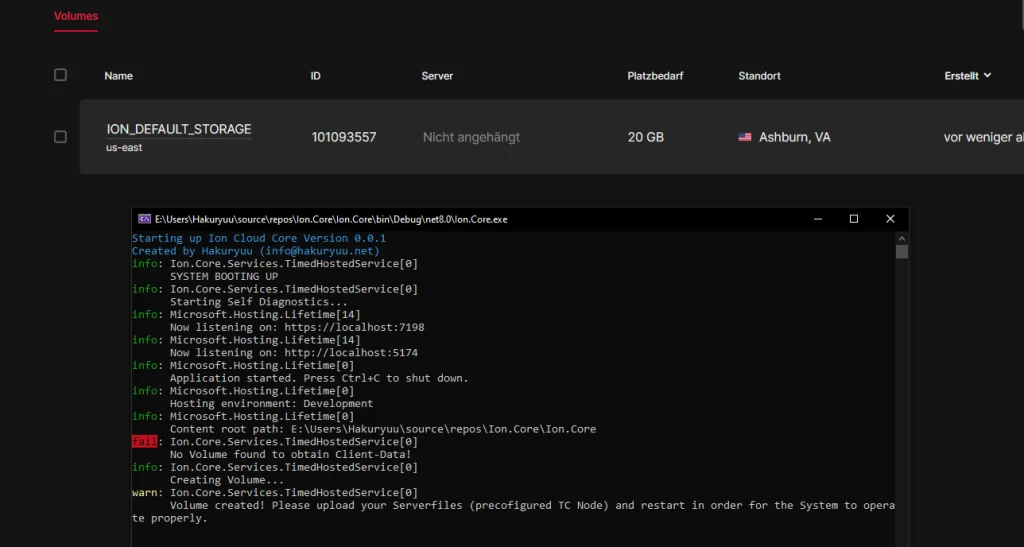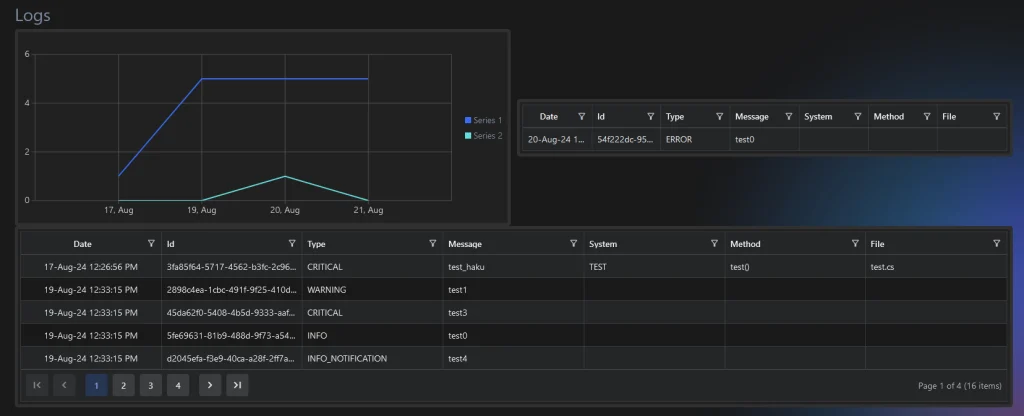Introduction
Running a Minecraft network is expensive when using traditional dedicated hosting. Servers are often online 24/7, even if they’re sitting idle during low player activity. Ion.Cloud solves this problem by combining effective scaling with Hetzner Cloud’s pay-per-minute billing, creating a smart system that scales horizontally only when demand requires it — and scales down again when load drops.
The result? High performance when you need it, massive savings when you don’t.
Architecture in Detail
Part I: The Core (Orchestrator & Autoscaler)
The Core is the brain of Ion.Cloud. It continuously collects metrics from all nodes, calculates total resource usage, and decides when to scale.
- If the average CPU usage surpasses 90%, the Core predicts the required capacity using ML.NET and spins up extra servers automatically.
- New nodes are deployed via the Hetzner Cloud API and integrated into the network instantly.
- When demand drops, unused servers are decommissioned to cut costs.

Part II: Node (Agent on Each Server)
Each root server instance has a Node agent installed.
- Monitors server-specific metrics (CPU, RAM).
- Sends data to the Core at defined intervals.
- Executes commands from the Core — for example, restarting a process, running an update, or stopping a server.
Part III: Default MC Cloud Integration
Ion.Cloud doesn’t replace your existing Minecraft cloud software — it extends it. Whether you use CloudNET, TimoCloud, or similar tools, Ion.Cloud ensures that your MC cloud has the resources it needs at any time by dynamically adding or removing nodes in real-time. As of now, it only has been tested with CloudNet since TimoCloud does not yet provide a proper REST Interface. According to the Devs this is subject to change.
Part IV: Advanced Admin Panel
A central web interface provides:
- Live resource monitoring per server and cluster-wide.
- SSH and MC console access directly from the browser.
- Unified logging for all actions, with advanced filtering.

Example of using the Logger-System:
a) As Webhook in Discord format:
POST https://api.hakuryuu.net/logs/webhook/{system}
Where {system} represents your plugin, tool etc...
b) As regular Log:
POST https://api.hakuryuu.net/logs/{system}- Plugin system for adding new features without redeploying the whole system.

Cost Comparison – Ion.Cloud vs. Traditional Dedicated Hosting
Example Assumptions:
- Traditional: 3 × dedicated servers, each 64 GB RAM / 8 cores @ €60/month = €180/month.
- Ion.Cloud: Hetzner CPX41 VMs (8 vCPU, 16 GB RAM) billed per minute.
- Average: 2 VMs always running, with 3 extra VMs spun up for ~90h/month during spikes.
| Setup | Specs | Billing Model | Monthly Cost |
|---|---|---|---|
| Traditional Dedicated | 3 × 64 GB RAM / 8 cores | Flat-rate 24/7 rental | €180 |
| Ion.Cloud + Hetzner | CPX41 (8 vCPU / 16 GB RAM) | €0.045/h per VM | ~€85 |
€180 █████████████████████████ Traditional Hosting
€85 ████████ Ion.Cloud + HetznerConclusion
Ion.Cloud can transform Minecraft hosting economics. By replacing always-on dedicated servers with demand-based cloud scaling, networks can keep performance high while cutting costs drastically. This concept isn’t new though. Its common practice in huge enterprises. As of now Ion.Cloud is more of a PoC or prototype which still needs development for many edge cases.
Downloads
Please note this software is provided without warranty. It is also not recommended using this software in production.
Source Code Core
Source Code Node
Source Code ACP
Source Code ACP.ModuleCore
Source Code ACP.ExampleModule
